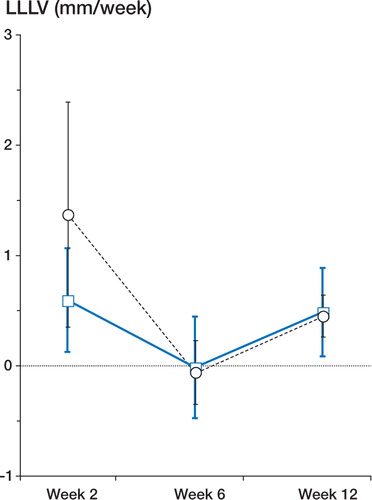Figures & data
Table 1. Clinical characteristics of patients with Perthes' disease studied longitudinally
Table 2. Biochemical markers in 15 children studied cross−sectionally at acute presentation with Perthes' disease, and in 9 of these children studied longitudinally for up to 2 years
Figure 1. LLLV during the first week following presentation in the unaffected leg compared with the affected leg. Only the 6 patients in whom lower leg measurements were available for both weeks 1 and 2 are shown. Circles (unbroken lines): patients with unilateral Perthes' disease. Squares (dashed line): boy with bilateral Perthes' disease (see text).

Figure 2. Changes in LLLV during the first 12 weeks following acute onset of Perthes' disease. Week 2 (n = 6), week 6 (n = 7), week 12 (n = 7). Data are plotted as mean and 95% confidence intervals of the mean. Squares (unbroken, thick line): affected leg. Circles (dotted line): unaffected leg.

